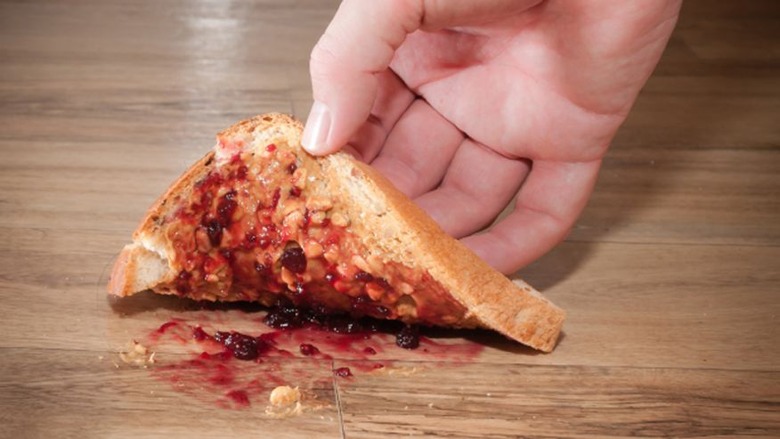5 Truths Behind The Five-Second Food Rule
If you've ever dropped a piece of food on the floor, chances are you still wanted to eat it. Common kitchen lore holds that if you pick it up within five seconds, everything should be fine.
But is there truth behind the so-called five second rule?
In 2007, scientists at Clemson University found that the amount of time food is left on the floor depends on how much bacteria collects on the food. Last year, many of the 2007 study's findings were replicated in a similar experiment performed at Aston University in England but this time, the scientists concluded that, generally, the faster a person picks up a dropped food, the safer it will be to eat—especially if it's under five seconds because it allows less time for germs to transfer.
But the type of food, and type of floor surface you drop it on can play a big factor in how likely you are to get sick from a piece of fallen food.
Professor Paul Dawson, the lead scientist on the Clemson University study, recently revisited the findings from the two experiments in an article for The Conversation, to share some important insights.
So, while it may be okay to pick up that toast on the floor, you might want to consider these facts:
1. Moist foods will pick up more bacteria more readily.
Moist foods like deli meats or sticky desserts that were left of the floor for longer than five seconds were the "most susceptible to becoming contaminated with bacteria." Drier foods like toast or dried fruit were less tainted if left on the floor for over five seconds.
2. Food dropped on carpets are less likely to pick up more germs.
Warm and fuzzy carpets might seem like they hold a lot of nooks and crannies for harmful germs, but the opposite may be case. Foods dropped on tile or laminate were also more likely to become contaminated than foods dropped on carpet. In the study, when inoculated with Salmonella, less than 1 percent of the bacteria were transferred to surface compared to a transfer rate of 48 percent on tile and 70 percent on wood.
3. Women are more likely than men to eat food dropped on the floor.
Guys may seem rough and tough, but apparently when it comes to germs, many draw the line. A 2003 study performed by Jillian Clarke, a then high school student on an apprenticeship in Hans Blaschek's University of Illinois found that while"70 percent of women and 56 percent of men" were familiar with the five-second, women were more likely to eat food after it had been dropped on the floor. Aston University 2014 study found that "55 percent of those that would, or have, eaten food dropped in the floor are women."
4. It doesn't take very much bacteria to make you really, really sick.
If you happen to be in an exceptionally dirty kitchen, and you drop a piece of food on the floor for just a second, you should think twice before popping it in your mouth. As Professor Dawson says, "If you have millions or more cells on a surface, 0.1% is still enough to make you sick." Just 10 cells of certain strains of E. coli can cause severe illness or death in people that are already ill. But lucky for you, the chances of coming into contact with strains in the average kitchen is unlikely.
5. People should be just as concerned about other potential sources of contamination.
Focusing on a dirty floor should not distract people from recognizing other ways in which food can get in touch with harmful bacteria. "Bacteria are carried by various "media," which can include raw food, moist surfaces where bacteria has been left, our hands or skin and from coughing or sneezing," writes Dawson. Hands, unwashed dishes and utensils, unclean cutting boards and more can harbor bacteria for lengthy periods of time.
Related:
- Real pumpkin in spiced foods doesn't necessarily make it taste better
- Homage to fromage: 4 tips for pairing wine and cheese
- America's 6 best craft beer fests
